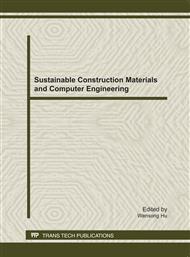p.447
p.455
p.460
p.471
p.477
p.483
p.493
p.501
p.508
Numerical Simulation on Aerodynamic Characteristics of Heavy-Duty Commercial Vehicle
Abstract:
With the development of automotive technology and high-speed highway construction, the speed of the vehicles increase which cause the significant increase in the aerodynamic drag when road vehicles are moving. Thereby the power of the vehicles, fuel economy, operational stability and other properties are affected very seriously. Heavy-duty commercial vehicles as the most efficient way to transport goods on the highway are widely used, and the speed of the vehicles increases faster. Especially the demands for heavy-duty commercial vehicles are increasing in recent years. Reducing the aerodynamic drag by the analysis of external aerodynamic characteristics, improving the fuel economy and reducing energy consumption have become new research topics of heavy-duty commercial vehicles. To make the heavy-duty commercial vehicles meet the national standards of energy saving, a simplified heavy-duty commercial truck model was built in this paper. The numerical simulation of the vehicle was completed based on the theory of the aerodynamics. The aerodynamic characteristics were analyzed, according to the graphs of the pressure distribution, velocity distribution and flow visualization. To improve the aerodynamic characteristics of heavy-duty commercial vehicles, the main drag reduction measures are reducing the vortex of the cab and the container, the end of the container and the bottom of the container.
Info:
Periodical:
Pages:
477-482
Citation:
Online since:
September 2011
Authors:
Price:
Сopyright:
© 2012 Trans Tech Publications Ltd. All Rights Reserved
Share:
Citation:


